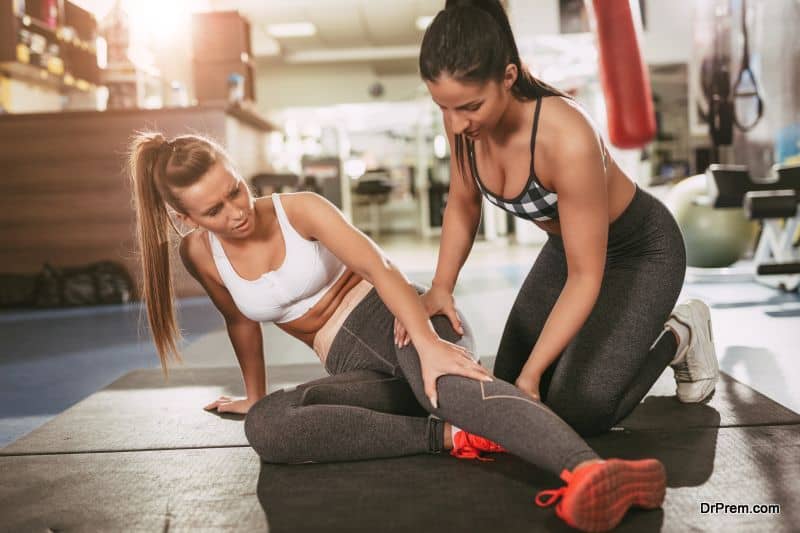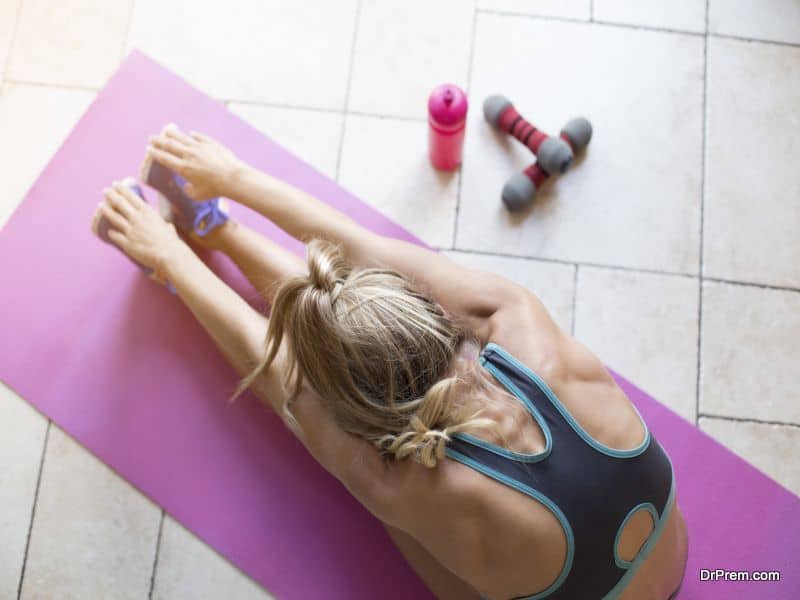As you get older, you have to be more respectful to your body. You begin to realize that you’re not invincible, and that you have limitations. Younger lifters can do all kinds of crazy things in the gym and get away with it. In this article, we identify 9 key things that you can do to help stave off injury as you get older.
Listen to Signs of Pain
The most important tip to avoiding injury as you get older is not to ignore the niggling signs of physical pain in your body. Back in your twenties and thirties, you could shut out those annoying aches and pains. You can’t do that anymore.
If you have joint pain or tendinitis or even if something just doesn’t feel right, listen to those cues. It is your body’s way of telling you that you need to change what you’re doing. That may require that you lighten the weight, or change the exercise completely.
Often times, barbell and dumbbell moves tend to cause pain in the shoulder joint for guys who are over 50. Many of them find that if they switch to using a machine then the pain goes away. That’s because machines don’t rely so much on stabilizer and antagonistic muscles for balance.
Warm Up & Cool Down Thoroughly
Warming up and cooling down are too often overlooked with people eager to hit the weights. As an older person, though, the warm up and cool down is an absolute necessity. Warming up will take your body from a sedentary to an active state, while also minimizing your risk of injury.
Start your warm up with some light cardio. Walk on a treadmill at 2.4 miles per hour for 10 minutes. From there you should move into some dynamic stretching. Dynamic stretching is also called movement preparation, where you go through a full range of motion without stopping.
Typical dynamic stretching moves include windmills for the shoulders, chest flyes for the pectorals and deep squats for the quadriceps. These moves are an ideal way to prepare for a workout because they reduce muscle stiffness and help to reduce the chance of injury.
You shouldn’t do any static stretching before your workout. This have actually been shown to reduce your body’s capacity to release power and does very little in the way of minimizing injury.
After your workout, you should take the time to bring your body back down to its pre workout state. This will help the body to repair itself in the wake of the stress imposed by the workout.
You should cool down with 5 minutes on the treadmill at 2.5 miles per hour. This will gradually decrease your body’s temperature. It also allows the waste products to be removed from your working muscles.
Follow your cardio warm down with 5 minutes of static stretching. This will help your muscles to relax and allow the muscle fibers to realign and reestablish their normal range of movement. Perform a static stretch by gently extending the target muscle as far as it can go and then holding that position for ten seconds.
Wear a Lifting Belt
Just because you’re over 50 doesn’t mean that you have to stop lifting heavy. It does mean that you have to start lifting smart, though. Wearing a weight lifting belt is a great way to continue lifting heavy without compromising the integrity of your lower back, which is often a cause of irritation in older men.
Limit your use of a lifting belt to the sets that you are pushing your heaviest weights on. If you use a belt on every exercise, you will become reliant on it and your core will not develop. In addition, you should perform specific exercises to strengthen your lower back. These can include hyperextensions and the Superman hold where you are lying face down on the floor and simulating Superman’s flying motion by arching your body banana fashion.
Pyramiding Your Weights
Training smart means that you can no longer jump straight into your maximum weight and pound out the sets to failure. Instead you need to pyramid your way up to a heavy weight. Pyramiding involves adding a little more weight while dropping the reps with each succeeding set. This allows your muscles to be fully prepared for the maximum overload of your heaviest set.
Here’s an example of how you can pyramid a heavy set of bench presses:
Set One: 100 pounds x 12
Set Two: 140 pounds x 10
Set Three: 160 pounds x 8
Set Four: 180 pounds x 6
Slow Down
Slowing down in your training tempo is good advice for all ages, but especially so for gym goers who are getting older. Slowing down will allow the muscles to feel the contraction a lot more effectively. Slow negatives is especially important for strength and muscle growth. Compared to fast normal reps, it allows the muscle to be placed under a lot more tension.
Slowing down will also increase the time when you are putting your muscles under tension. It has been determined that the ideal time under tension for each set is around 45 seconds. But, if you notice your set speed next time when you are in the gym you’ll probably find out that it is less than half that number. Slowing down in your rep speed is the way to change that.
Slowing down in your rep speed will make your set harder. That will probably require you to lower the weight. But that doesn’t matter – your muscles will be working far more intensely, and that is what counts.
Stay Hydrated
As an older person, you are more prone to dehydration while exercising. So, always carry a water bottle with you and drink liberally from it as you train. You should get through a liter (34 oz) over the course of a 45-minute training session.
Use More Machines
Weight training machines make more sense as you get older. Machine place less stress on your joints. Because you’re tracking through a set range of motion you will be able to focus more intently on the working muscle group. Of course, pin select machines are also a whole lot more convenient. They don’t require you to carry weights round the gym and load them on and off the bar. And you would be surprised to know that a lot of gym injuries to people over the age of 50 occur when people are taking weights on and off barbells.
Don’t Drop the Weights
When you were younger you could throw the weights with impunity (or until you got yelled at by the gym instructor). Now you cannot afford to do that. Dropping weights, especially when you have just finished a set of dumbbell presses, is a common cause of pec tears in guys over the age of 50. To avoid becoming another statistic, take the time to de-load the dumbbells with care – no sudden dropping. Better still, get yourself a spotter who can take them from you when you’re done.
You should also be careful to pick up dumbbells properly. This is especially important, again, when doing the dumbbell bench press. If you just try to pull them back from the floor, you are going to put a lot of excess strain on your lower back. To avoid that, you need to get into the habit of lifting the dumbbells onto your knees, one at a time, and them kicking them back into chest position.
Foam Rolling
Along with warming up with some cardio and dynamic stretching, you should also begin (and end) your workout with a few minutes of foam rolling. If you roll your muscles daily, you will be addressing those niggling aches and pains with self-administered deep tissue massage. This allows you to get deep into the muscle tissue and to prevent the problem causing toxins and lactic acid from building up.
Foam rolling is also a fantastic way to prepare your muscles for the workout to come.
Get Enough Rest
As you get older you are more likely to become over trained. Not only does your recuperative ability slow down, but the release of muscle repair hormones, such as testosterone and growth hormone, are diminished with every decade. That is why it is important that you provide your body with sufficient amount of time to recover from your workouts.
After working a muscle group, it requires around 48-72 hours for the cells within the tissue to refill with glycogen and for the muscle to completely recover from that workout. As you get older, that time gets longer. For that reason, you should train each body part no more than once every 4 days.
We suggest a day on / day off weight training protocol for older athletes. On your day away from the gym, it would be a great idea to do some cardio exercise to balance out your weight training. Swimming is an excellent option.
Key Points
- Listen to your body
- Warm up and cool down EVERY workout
- Use a foam roller
- Use a weightlifting belt on heavy compound moves
- Get plenty of rest between workouts
- Don’t drop weights
- Pyramid your weights
- Use more machines
- Drink water
Article Submitted By Community Writer








